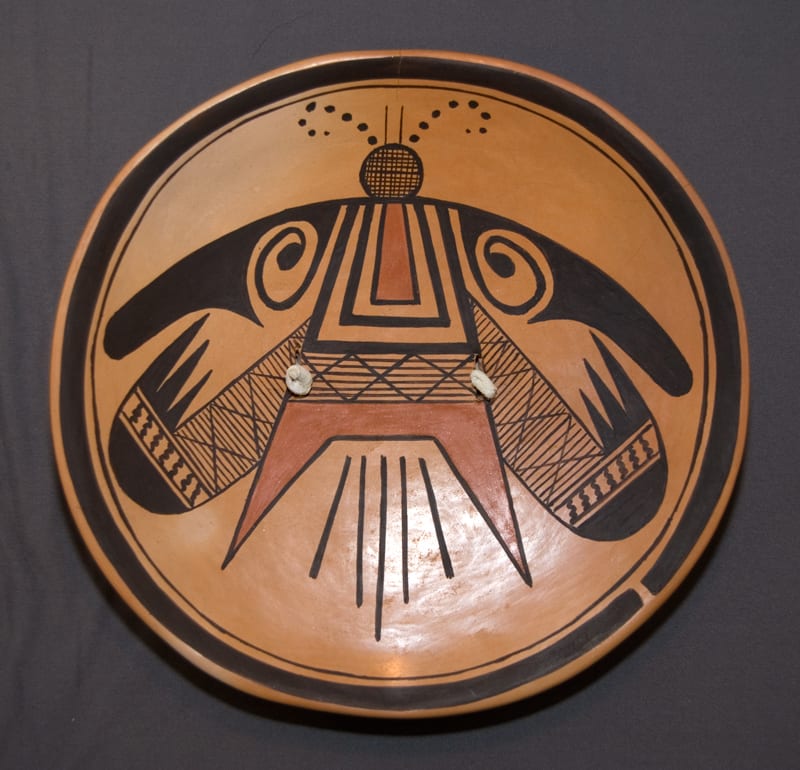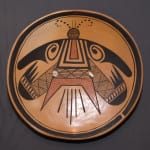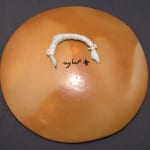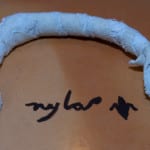This shallow, slightly oval, Hopi-Tewa bowl has two central slits for the attachment of a handle and a polychrome butterfly design incorporating a fine-line migration pattern. There is a slight firing crack above the butterfly head. Such bowls are attached to the belt of Long-Hair katchinas or held in their hands during a plaza dance. Since this example is signed, it was probably not intended to be danced. For another example, see 2006-04.
Butterflies are a frequent motif on Hopi pottery since they recall moisture, fertility, good crops and blessings. (See the Category List for “Folk Art Butterfly Design.”) (Also see Sekaquaptewa, 2006.) Nyla has incorporated elements of the Nampeyo fine-line migration pattern into the design. The result is powerful.
Like classic Sikyatki Revival ware by her great-great grandmother “Old Lady” Nampeyo, Nyla
1) Creates a tension between linear and curvilinear design elements;
2) Uses color to integrate the design;
3) Uses empty (negative) space to highlight the image; and
4) Frames the design with thick above thin framing lines.
The black wings of the butterfly pull the eye downward while the curvilinear inserts in the wing pull the observer’s eye up. The lower wing elements are fragments of the fine-line migration design. These thrust the observer’s eye down and then turn at the tips and focus the eye up towards the curvilinear inserts in the upper wing. The thick curvilinear wings are contradicted by the light linear lines of the migration pattern. The linear core of the image contrasts with the curvilinear (though contradictory) motion of the two sets of wings.
The red tail and the red chest of the butterfly tie together the central core of the image. The butterfly visually dominates the interior of the dish, but there is sufficient empty (negative) space around the image to highlight the design. (One is tempted to say that there is sufficient negative space around the butterfly to provide room for flight.) An observer’s gaze is focused on the central image and the negative space because they are framed by a solid thin line, itself surrounded by a thick framing line (with a spirit break).
These design techniques work together to give the decoration unusual power and energy. For other pots in the collection by Nyla Sahmie, see the Artist List




